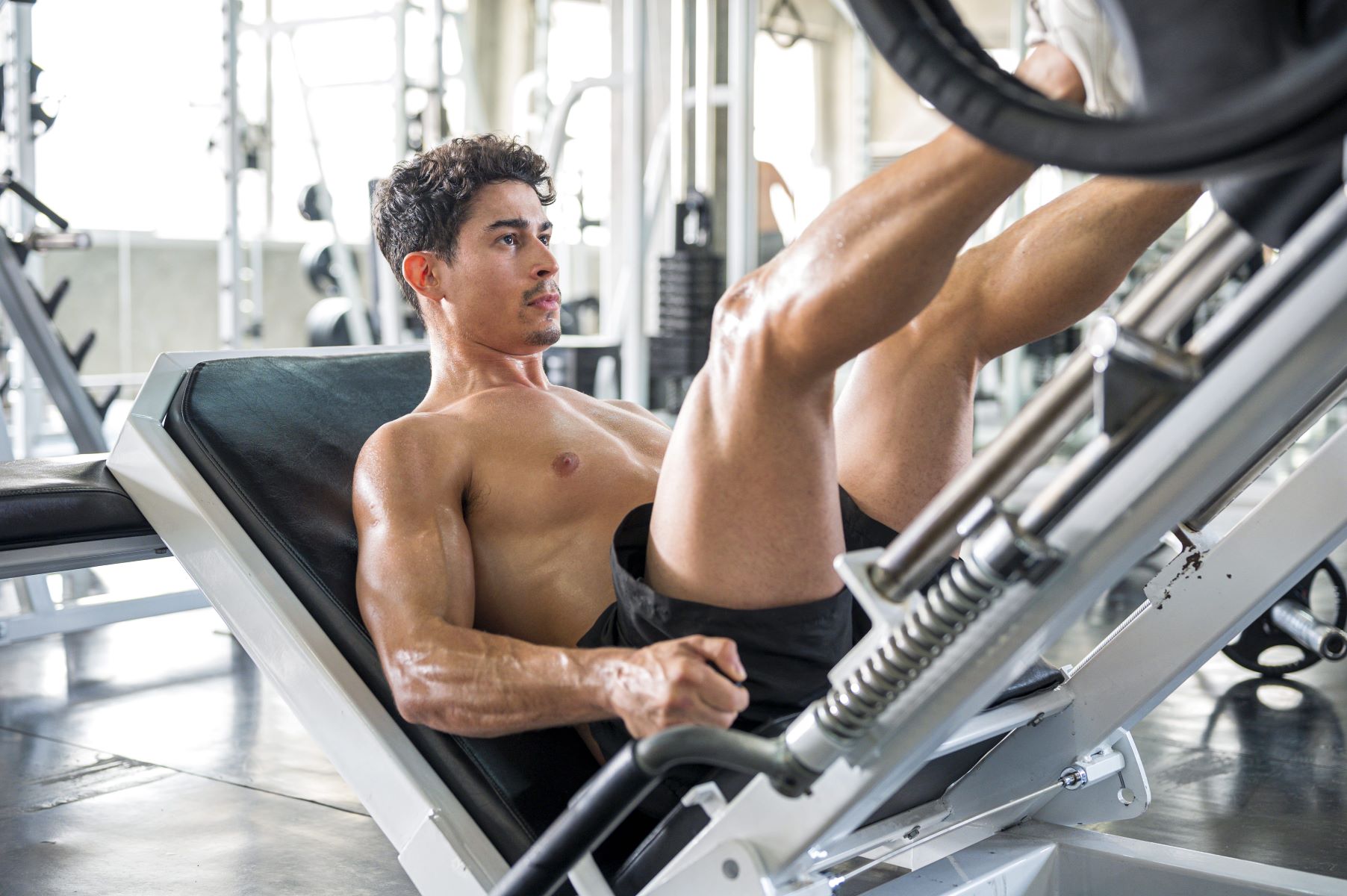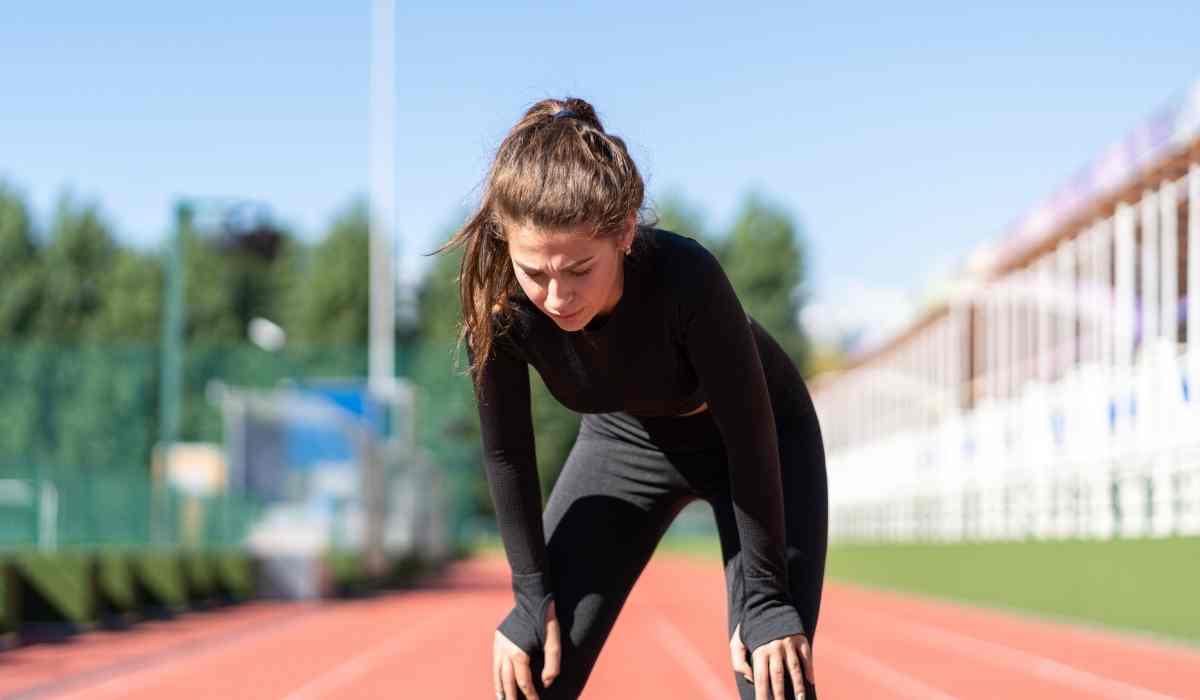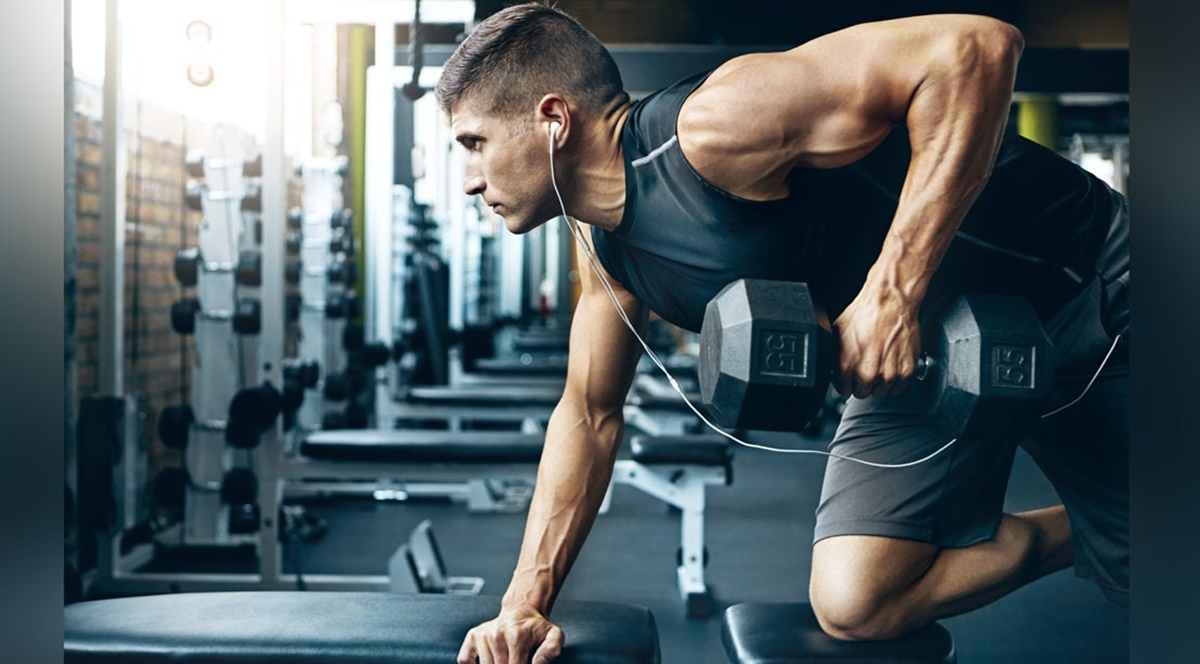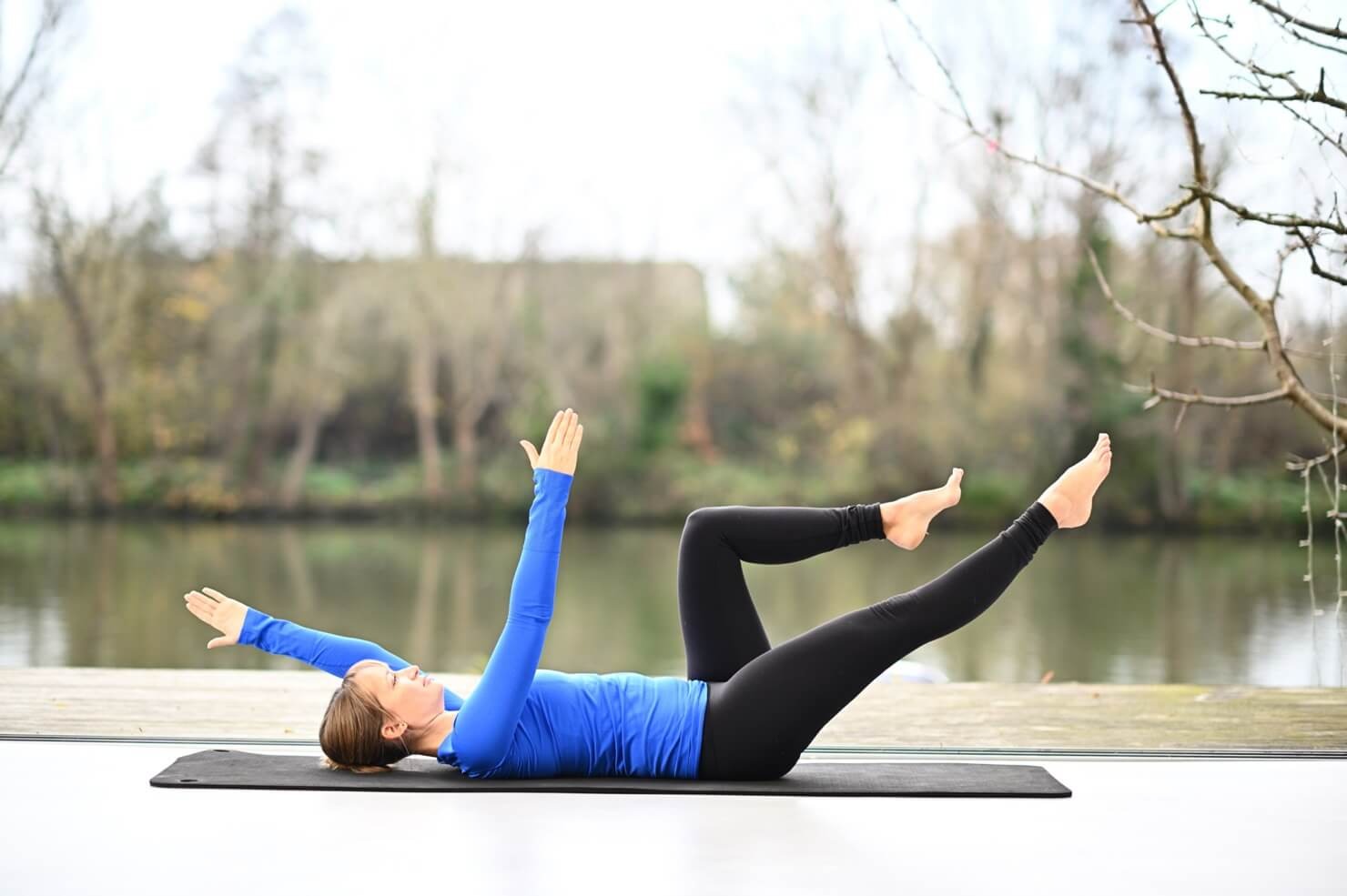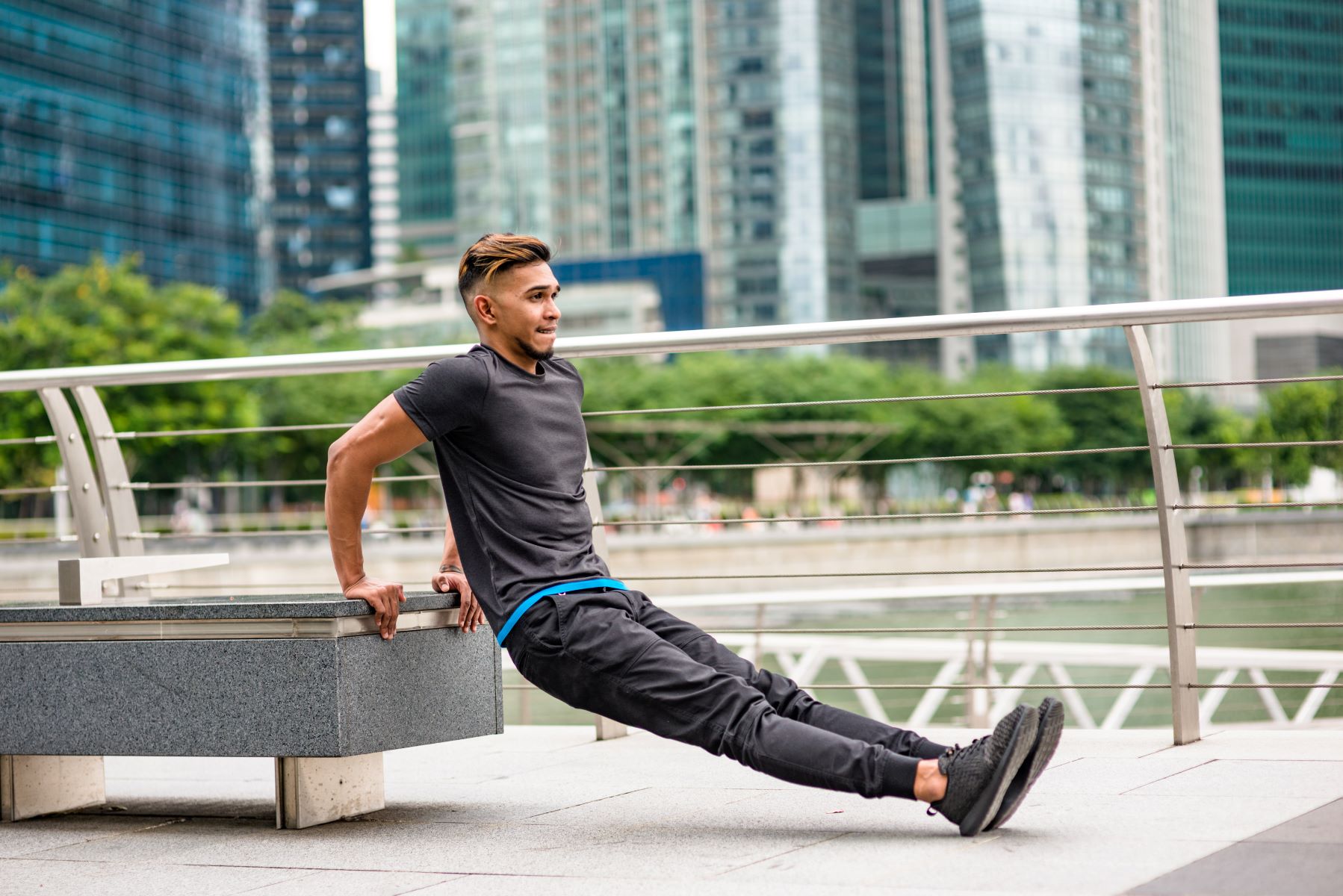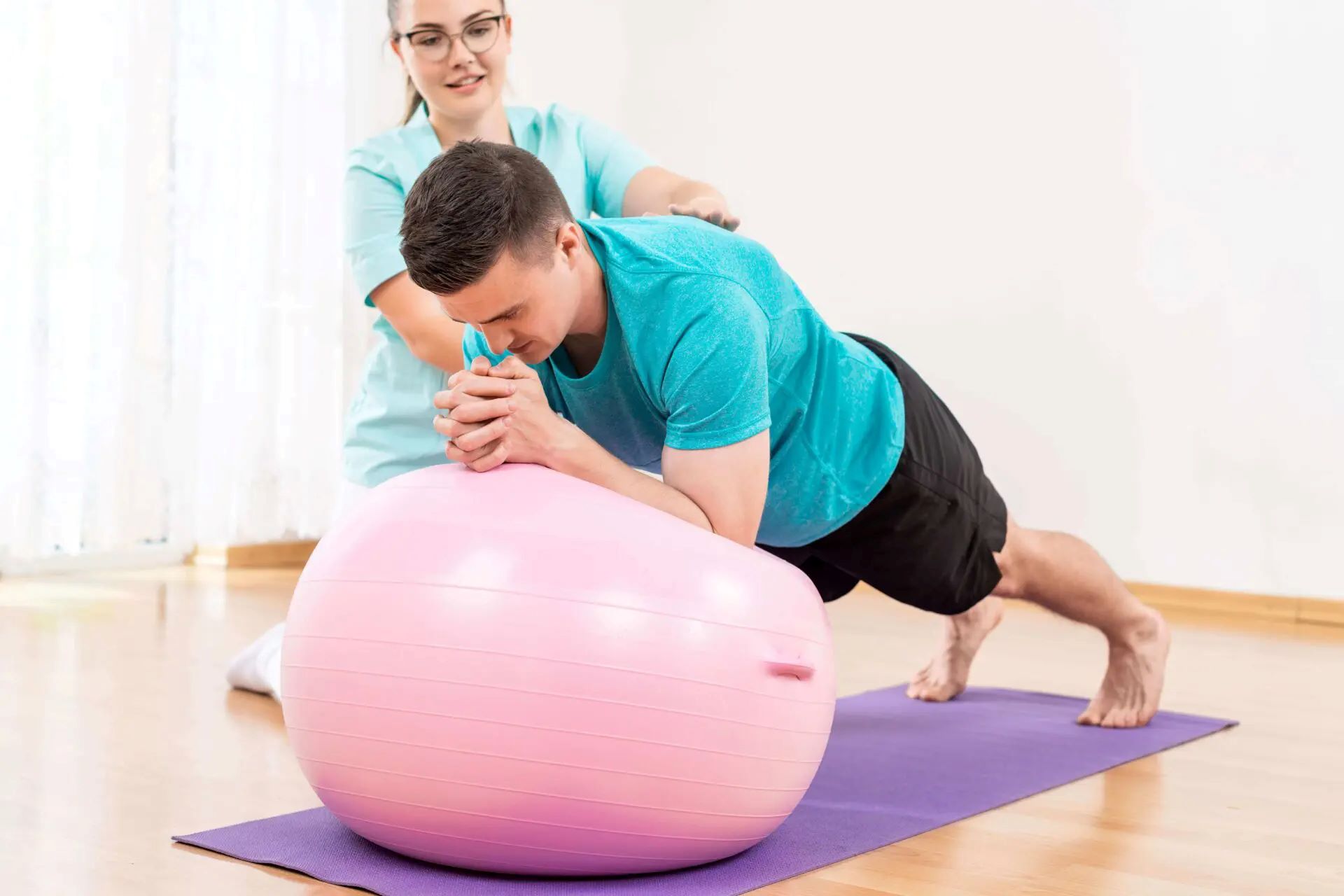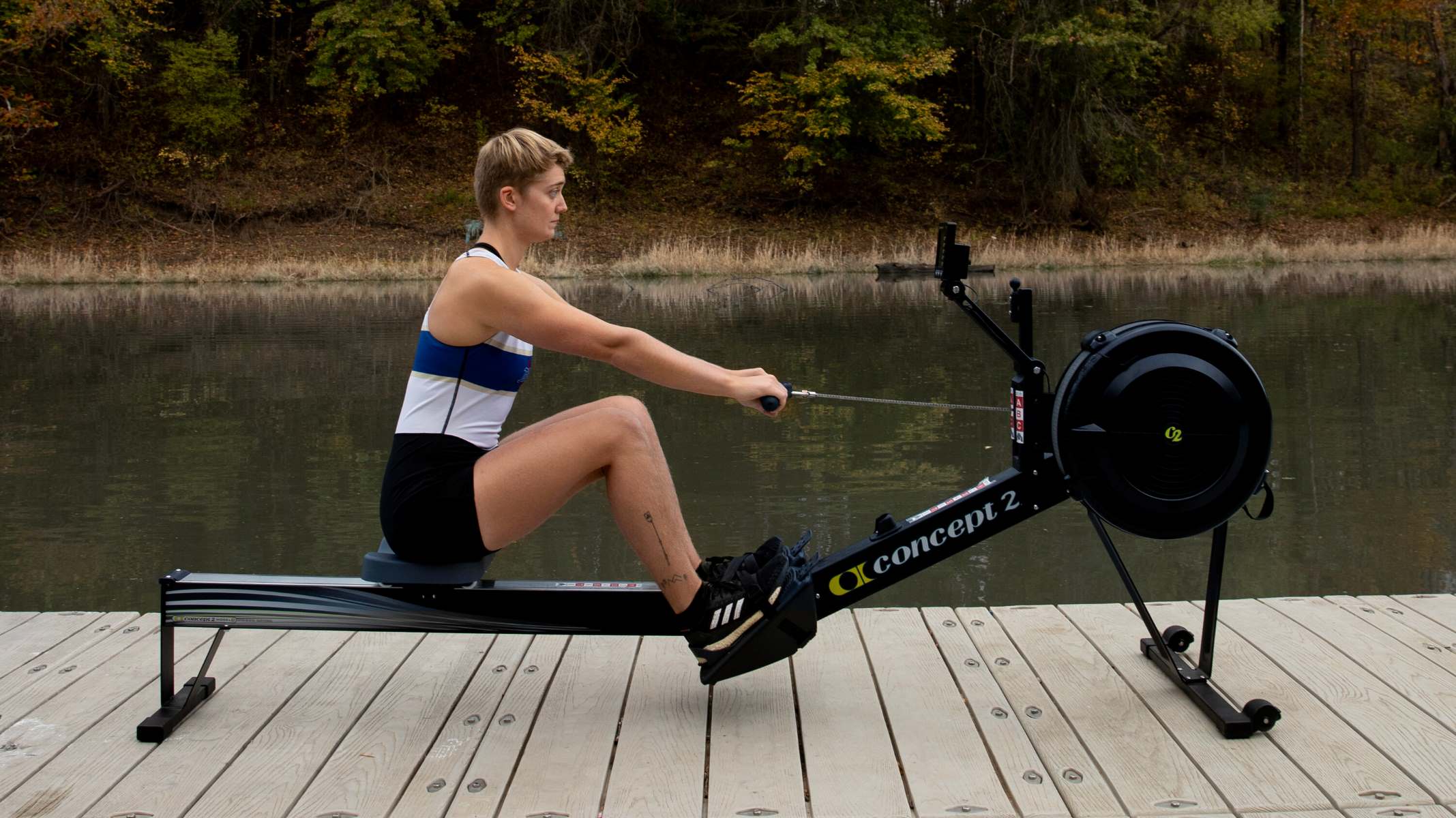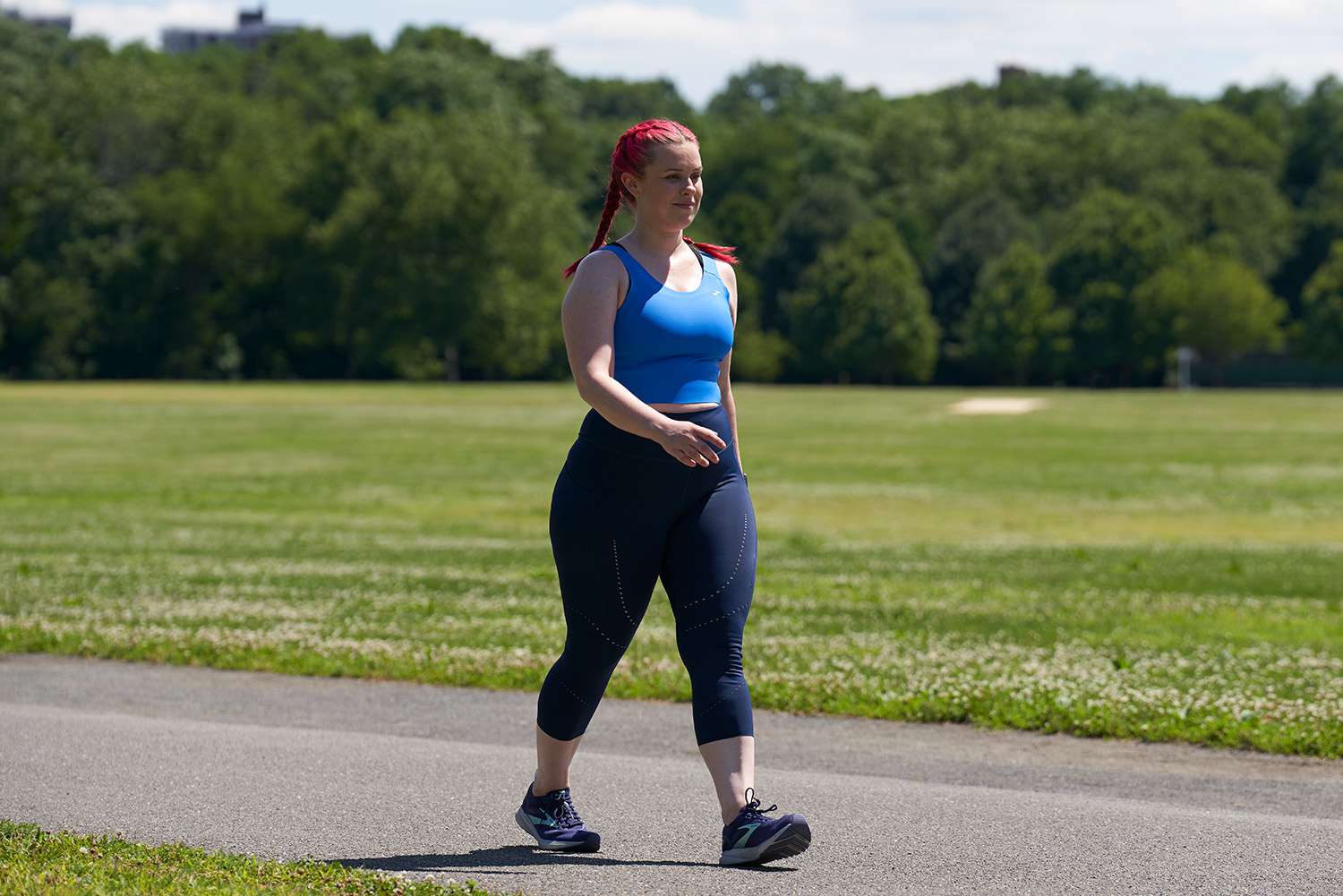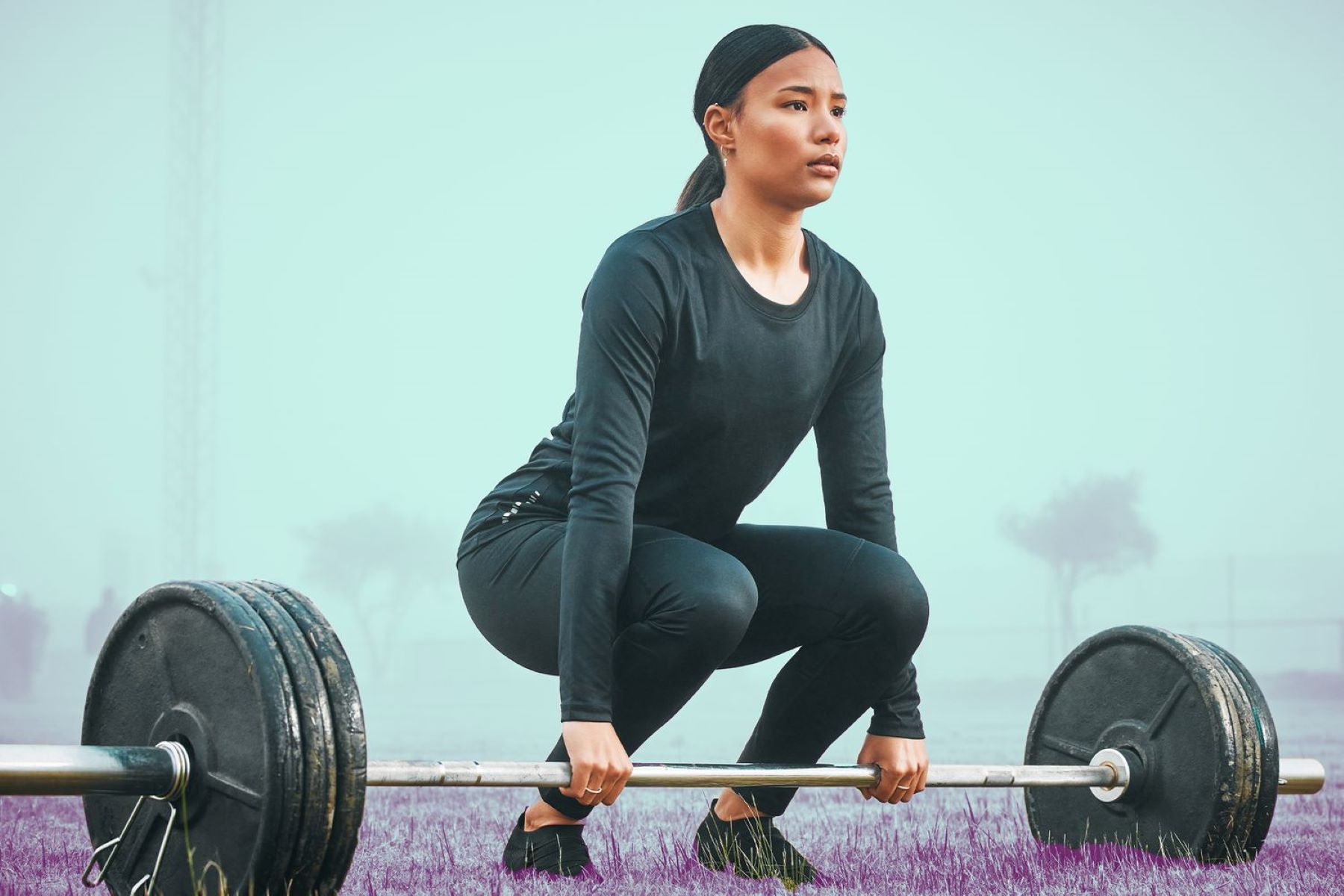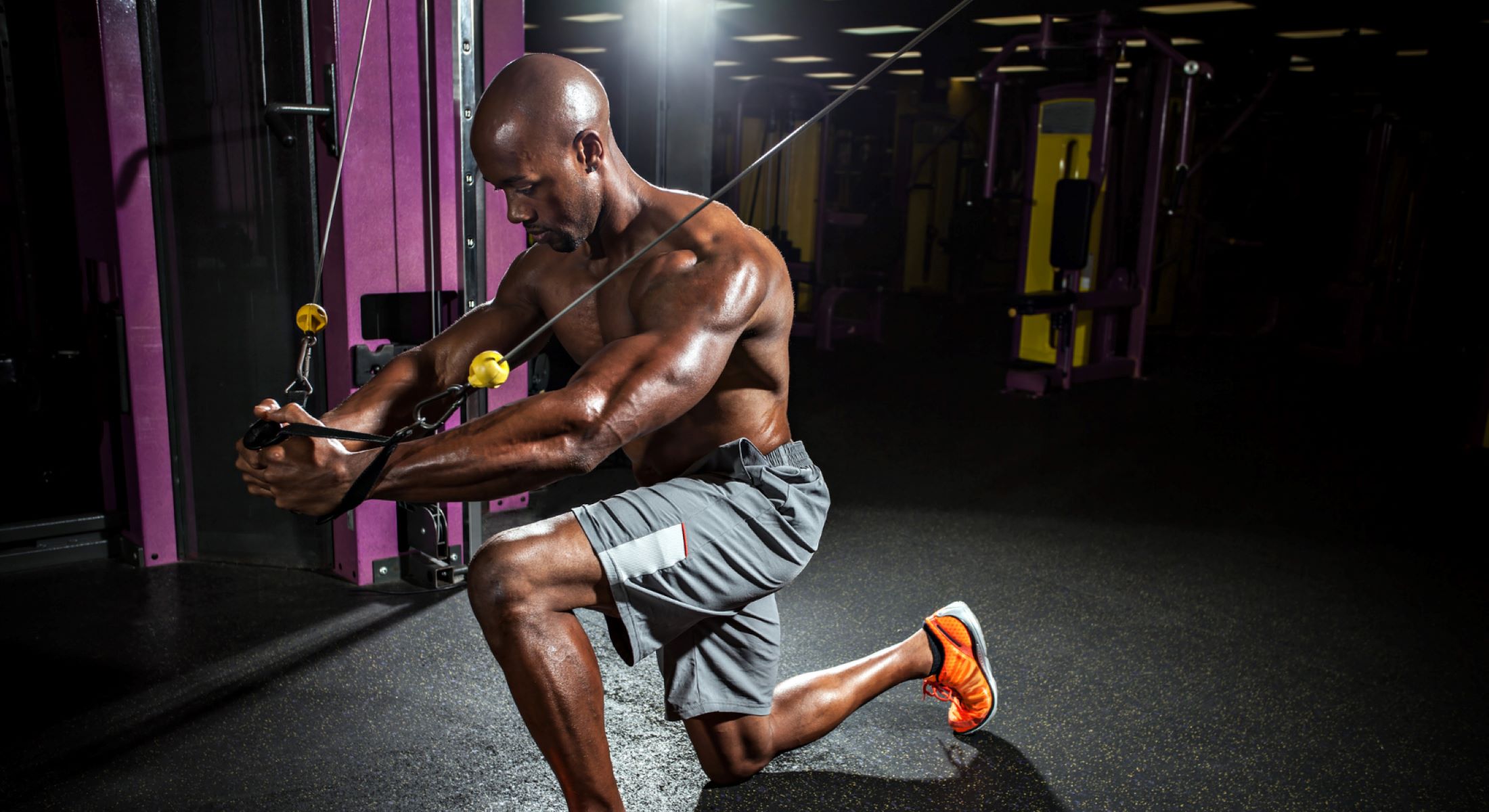Home>Misc>Featured>What Does Poor Posture Lead To In Athletic Performance
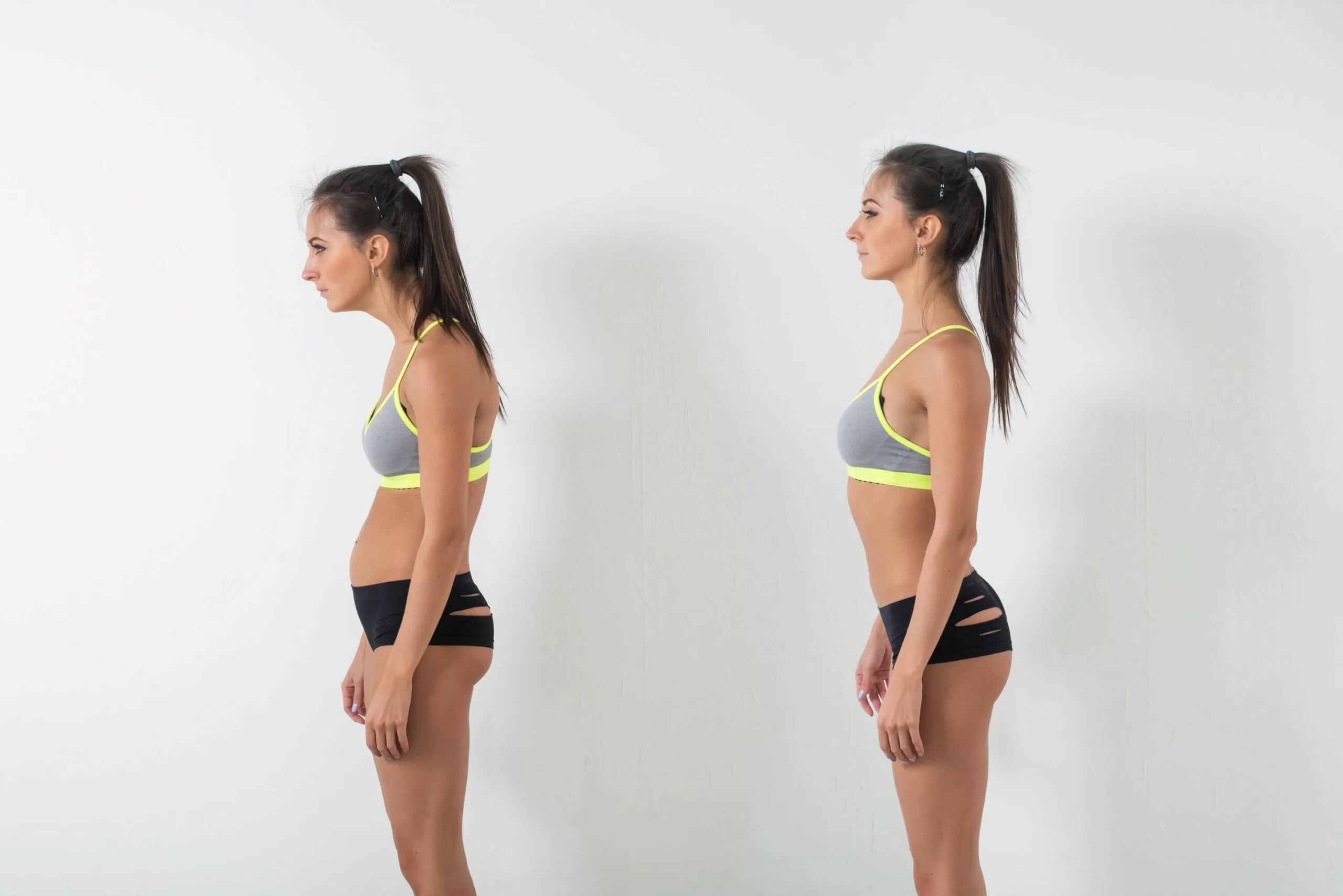

Featured
What Does Poor Posture Lead To In Athletic Performance
Modified: March 1, 2024
Discover the impact of poor posture on athletic performance. Learn how featured exercises and proper alignment can enhance your athletic abilities.
Introduction
Posture plays a critical role in athletic performance. Whether you’re a professional athlete, a weekend warrior, or someone who enjoys recreational sports, having good posture is essential for optimizing your physical abilities. However, poor posture can have detrimental effects on performance, leading to decreased range of motion, reduced power and strength, increased risk of injury, impaired balance and coordination, compensation patterns, and even mental and emotional implications.
Good posture is defined as the correct alignment of the body, where the muscles and bones are balanced and aligned in a way that supports optimal movement and function. When the body is in proper alignment, muscles can work efficiently, joint mobility is maintained, and overall athletic performance is enhanced.
On the other hand, poor posture can disrupt the body’s natural alignment, causing imbalances and stress on various structures. This can negatively impact an athlete’s ability to perform at their best, limiting their potential and increasing the risk of injury.
In this article, we will delve into the effects of poor posture on athletic performance. We will explore how it affects various aspects of physical function and discuss strategies to improve posture in order to enhance athletic performance.
Effects of Poor Posture on Athletic Performance
Poor posture can have a significant impact on an athlete’s performance. It affects various aspects of physical function, including range of motion, power and strength, injury risk, balance and coordination, compensation patterns, and even mental and emotional well-being.
One of the primary effects of poor posture is a decreased range of motion. When the body is in a slouched or hunched position, it restricts the movement of joints and muscles. This limitation can hinder an athlete’s ability to execute movements properly, resulting in reduced agility, speed, and overall athletic performance.
In addition to limited range of motion, poor posture also diminishes power and strength. When the spine and pelvis are misaligned, it alters the activation of muscles, making it challenging to generate force efficiently. This can significantly impact an athlete’s ability to generate explosive movements, such as sprinting or jumping, leading to decreased power output and diminished athletic performance.
Furthermore, poor posture increases the risk of injury. Misalignment and imbalances in the body place excessive stress on certain structures, such as joints, tendons, and ligaments. Over time, this can lead to overuse injuries, joint pain, and musculoskeletal imbalances, which can limit an athlete’s ability to perform at their best.
Impaired balance and coordination are also common effects of poor posture. When the body is not properly aligned, it disrupts the body’s proprioceptive system, which plays a crucial role in balance and coordination. This can result in decreased stability and coordination, making it difficult for athletes to perform precise movements and maintain control during dynamic activities.
Compensation patterns and muscle imbalances are another consequence of poor posture. When certain muscles are weak or tight due to poor alignment, other muscles have to compensate, leading to imbalances in strength and flexibility. These muscle imbalances can further perpetuate poor posture and increase the risk of injury.
Additionally, poor posture can impact breathing and oxygen intake. When the chest is collapsed and the shoulders are rounded forward, it restricts the expansion of the ribcage, limiting lung capacity. This can impair an athlete’s ability to take in enough oxygen, leading to decreased endurance and decreased performance during prolonged activities.
Lastly, poor posture can have mental and emotional implications. The way we carry ourselves physically affects our mood, confidence, and overall mindset. Slouched posture can contribute to feelings of lethargy, low self-esteem, and decreased motivation. On the other hand, having good posture can enhance mental focus, boost confidence, and promote a positive mindset.
Decreased Range of Motion
Poor posture can significantly impact an athlete’s range of motion, limiting their ability to move and perform athletic movements efficiently. When the body is in a slouched or hunched position, it restricts the natural movement of joints and muscles.
One of the key areas affected by poor posture is the spine. When the spine is not properly aligned, it can lead to a lack of flexibility and mobility in the vertebrae. This restriction can impact an athlete’s ability to rotate, bend, and extend their spine, hindering movements such as twisting, bending, or arching of the back.
Poor posture also affects the mobility of the shoulders. When the shoulders are rounded forward, it limits the range of motion in the shoulder joints. This can hinder an athlete’s ability to perform overhead movements, such as throwing, serving, or reaching for a high catch in sports like basketball or volleyball.
The hips are another area that can be adversely affected by poor posture. When the pelvis is tilted or misaligned, it can lead to tightness and decreased flexibility in the hip muscles and joints. This can limit an athlete’s ability to perform movements that involve hip extension, such as sprinting, jumping, or kicking.
Furthermore, poor posture can restrict the mobility of the neck. When the head is positioned forward and the neck is extended, it can cause stiffness and decreased range of motion in the cervical spine. This limitation can impact an athlete’s ability to look side to side or up and down, affecting their awareness and ability to track objects in sports like tennis or soccer.
Decreased range of motion due to poor posture not only affects individual joints but can also disrupt the kinetic chain. The kinetic chain is the interconnected system of joints and muscles involved in movement. When one joint is restricted, it can affect the movement and function of adjacent joints. For example, limited range of motion in the thoracic spine can lead to compensatory movement patterns in the shoulders or hips, altering biomechanics and hindering athletic performance.
Ultimately, decreased range of motion impairs an athlete’s ability to execute movements effectively and efficiently. It reduces their agility, flexibility, and fluidity of motion, leading to a less efficient and potentially less successful performance.
Decreased Power and Strength
Poor posture can have a significant impact on an athlete’s power and strength, ultimately affecting their overall athletic performance. When the body is not in proper alignment, it can disrupt the activation and recruitment of muscles, leading to decreased force production and diminished power output.
One key aspect affected by poor posture is the positioning of the spine. When the spine is misaligned or rounded, it can lead to a lack of activation and engagement of the core muscles. The core muscles, including the abdominals and back muscles, play a crucial role in stabilizing the spine and transferring force from the lower to the upper extremities. When these muscles are not properly engaged due to poor posture, it can result in a weaker and less powerful movement execution.
In addition, poor posture can negatively impact the positioning and activation of the shoulder girdle muscles. Rounded shoulders and a forward head posture can cause a lengthening and weakening of the muscles in the upper back and shoulders, such as the rhomboids and lower trapezius. These muscles are important for stabilizing the scapulae and generating force during upper body exercises and movements. When these muscles are weak and inactive, it can lead to decreased power and strength in actions such as pushing, pulling, and throwing.
Furthermore, poor posture can affect the positioning of the hips and lower extremities. A misaligned pelvis or tight hip flexors can limit the recruitment and engagement of the gluteal muscles, which are essential for generating power and strength in movements such as jumping, squatting, and running. When the gluteal muscles are underutilized, other muscles, such as the quadriceps or lower back muscles, may compensate, leading to imbalanced muscle activation and reduced overall power output.
Another factor to consider is the impact of poor posture on proper breathing mechanics. When the chest is collapsed and the shoulders are rounded forward, it restricts the expansion of the ribcage and limits diaphragmatic breathing. This shallow breathing pattern can lead to decreased oxygen intake and affect an athlete’s ability to perform high-intensity exercises and maintain endurance. Oxygen is crucial for energy production, and inadequate intake can result in reduced power and endurance capacity.
Overall, poor posture can hinder an athlete’s ability to generate force efficiently, resulting in decreased power and strength. This can significantly impact their performance in explosive movements, such as sprinting, jumping, or lifting, and make it difficult for them to reach their full potential in their respective sports.
Increased Risk of Injury
Poor posture can significantly increase an athlete’s risk of injury. When the body is not in proper alignment, it places excessive stress and strain on various structures, including joints, muscles, tendons, and ligaments. Over time, this can lead to overuse injuries, joint pain, and musculoskeletal imbalances.
One major contributing factor to increased injury risk is the biomechanical changes that occur with poor posture. Misalignment of the spine or pelvis can alter the body’s natural movement patterns, leading to compensatory movement strategies. For example, rounded shoulders can cause the scapulae to protract and the shoulder blades to glide improperly, increasing the risk of shoulder impingement, rotator cuff injuries, and even labrum tears.
Poor posture also affects the alignment and stability of the joints. Misaligned joints can result in uneven weight distribution and increased stress on specific areas. This can lead to conditions such as patellofemoral pain syndrome, Achilles tendonitis, or plantar fasciitis. In addition, poor posture can cause imbalances in muscle strength and flexibility, leading to muscle strains, sprains, and tears.
Furthermore, poor posture can contribute to the development of repetitive strain injuries. When certain muscles are consistently overused due to compensatory movements, it can result in chronic muscle imbalances and increased susceptibility to injuries. For example, an athlete with rounded shoulders may overuse their upper trapezius muscles and neglect the activation of their lower trapezius, leading to imbalanced muscle recruitment and an increased risk of shoulder injuries.
Inadequate posture can also impact joint stability and proprioception. Proper alignment helps maintain joint integrity and promotes optimal proprioceptive input, which is essential for balance, coordination, and injury prevention. Poor posture can disrupt this proprioceptive feedback, leading to decreased stability and an increased risk of falls and sprains.
Additionally, poor posture can affect the overall movement mechanics and biomechanics of an athlete. Misalignments can cause altered movement patterns, which may place unnecessary stress on certain joints or structures. This can result in increased wear and tear, leading to degenerative conditions such as osteoarthritis or tendinopathies.
Overall, poor posture significantly increases an athlete’s risk of injury. It can lead to imbalances, altered movement patterns, and compromised joint stability. To reduce the risk of injury, it is important for athletes to prioritize and maintain proper posture throughout their training and athletic performance.
Impaired Balance and Coordination
Poor posture can have a significant impact on an athlete’s balance and coordination. When the body is not properly aligned, it can disrupt the body’s proprioceptive system, which is responsible for providing feedback on body position and movement.
One of the key factors affecting balance and coordination is the alignment of the spine. When the spine is misaligned or rounded, it can interfere with the body’s ability to sense its position in space. This can lead to difficulties in maintaining stability and balance during dynamic movements, such as changes in direction, pivoting, or rapid turns.
Poor posture can also affect the alignment and stabilization of the shoulder girdle and scapulae. Rounded shoulders and a forward head posture can cause the scapulae to wing, inhibiting the proper activation of the muscles responsible for stabilizing the shoulder blades. This can lead to decreased stability and coordination during upper body movements, such as throwing, serving, or swinging a racket.
The alignment of the hips and pelvis is another important factor for balance and coordination. When the pelvis is tilted or misaligned, it can affect the engagement and recruitment of the core muscles, including the abdominals and back muscles. These muscles play a critical role in stabilizing the pelvis and maintaining balance during movements. When the core muscles are not properly activated due to poor posture, it can result in compromised stability and coordination.
Moreover, poor posture can impact the alignment of the lower extremities, including the knees and ankles. Misalignment in these joints can affect weight distribution and stability, making it challenging to maintain balance during movements such as running, jumping, or landing. This can increase the risk of falls, sprains, and other balance-related injuries.
Compensation patterns and muscle imbalances caused by poor posture can further contribute to impaired balance and coordination. When certain muscles are overactive or underactive, it can disrupt the coordination and timing of movement. For example, a tight hip flexor can cause an imbalance in muscle activation between the hip flexors and the gluteal muscles, leading to impaired coordination and stability during activities that involve hip extension.
Overall, impaired balance and coordination due to poor posture can significantly affect an athlete’s performance. It can hinder their ability to execute precise movements with control and efficiency, increasing the risk of falls, loss of balance, and diminished performance in sports that require agility, quick reaction times, and precise coordination.
Compensation Patterns and Muscle Imbalances
Poor posture can lead to compensation patterns and muscle imbalances throughout the body. When the body is not in proper alignment, certain muscles may become overactive and tight, while others become weakened and underactive. These imbalances can impact an athlete’s movement patterns, muscle recruitment, and overall athletic performance.
One common compensation pattern resulting from poor posture is the forward head posture. This occurs when the head protrudes forward, causing the muscles at the front of the neck to become tight while the muscles at the back weaken. This imbalance can affect the alignment of the spine, leading to muscle imbalances throughout the upper body.
Another common compensation pattern is rounded shoulders. Poor posture can cause the chest muscles to tighten and shorten, while the muscles between the shoulder blades weaken and elongate. This imbalance can lead to a rounded posture and an increased risk of shoulder injuries, such as impingement or rotator cuff issues.
Compensation patterns and muscle imbalances can also occur in the lower body. For example, poor posture can lead to tight hip flexors and weakened gluteal muscles. This imbalance can affect hip extension, leading to improper movement patterns and reducing power and efficiency in activities like running and jumping.
These compensation patterns and muscle imbalances can create a chain reaction throughout the body, affecting multiple joints and muscle groups. For instance, tight hip flexors can lead to an anterior pelvic tilt, altering the alignment of the spine and causing excessive curvature in the lower back. This can result in lower back pain and dysfunction, further impacting an athlete’s ability to move and perform optimally.
In addition to affecting movement and performance, compensation patterns and muscle imbalances can increase an athlete’s risk of injury. When certain muscles are overworked and others are underutilized, it creates stress on the joints and puts excessive strain on specific structures. This can lead to chronic pain, inflammation, and increased susceptibility to musculoskeletal injuries.
Addressing compensation patterns and muscle imbalances is crucial for restoring proper posture and optimizing athletic performance. This can be done through a combination of corrective exercises, stretching, and strengthening programs that target the specific imbalances. By rebalancing muscle activation and improving overall alignment, an athlete can improve movement efficiency, reduce the risk of injury, and enhance their athletic performance.
Impact on Breathing and Oxygen Intake
Poor posture can have a significant impact on an athlete’s breathing and oxygen intake, which are vital for optimal athletic performance. When the body is not in a proper alignment, it can restrict the expansion of the ribcage and hinder the ability to take deep, diaphragmatic breaths.
One common effect of poor posture is a collapsed chest and rounded shoulders. This posture compresses the ribcage and limits its ability to expand fully during inhalation. As a result, an athlete may resort to shallow chest breathing, relying on the upper chest muscles instead of the diaphragm to facilitate breathing. Shallow chest breathing is less efficient and can lead to decreased oxygen intake during physical activity.
Furthermore, poor posture can impair the movement of the muscles involved in breathing. The alignment of the spine and ribcage directly affects the function of these muscles, including the diaphragm and the intercostal muscles. When the spine is misaligned or the ribcage is compressed, these muscles may not work as effectively, hindering the ability to generate the necessary force for deep inhalation and exhalation.
Additionally, poor posture can affect the alignment of the cervical spine, which can negatively impact the function of the accessory respiratory muscles. These muscles, located in the neck and upper back, play a role in assisting with inhalation during times of increased respiratory demand. Misalignment in the cervical spine can compromise the function of these muscles, further exacerbating breathing difficulties and reducing oxygen intake.
The inadequate supply of oxygen to working muscles can have detrimental effects on an athlete’s performance. During physical activity, the demand for oxygen increases to support energy production and muscle activity. When there is insufficient oxygen intake, an athlete may experience fatigue more quickly, have decreased endurance, and overall reduce their ability to perform at their best.
Improper breathing mechanics due to poor posture can also impact an athlete’s ability to regulate their breathing during exercise. Effective breath control is important for maintaining focus, calming nerves, and managing exertion levels. Poor posture can disrupt the natural rhythm and coordination of breathing, making it more challenging for athletes to find a smooth and efficient breathing pattern.
Addressing posture-related issues and improving alignment can help optimize breathing mechanics and enhance oxygen intake during physical activity. By focusing on improving posture, athletes can ensure proper expansion of the ribcage, engage the diaphragm more effectively, and enhance their overall breathing mechanics. This, in turn, can boost endurance, decrease perceived exertion, and potentially lead to improved athletic performance.
Mental and Emotional Implications
Poor posture can have significant mental and emotional implications for athletes. The way we hold ourselves physically can impact our mood, confidence, and overall mindset, ultimately influencing our athletic performance.
One of the mental effects of poor posture is a decrease in energy and motivation. Slouched or hunched posture can contribute to feelings of lethargy and low energy levels. When our bodies are in a collapsed position, it can send signals to our brain that we are tired or lacking in energy, which can adversely affect our motivation and drive to perform at our best.
Poor posture can also contribute to a decrease in self-esteem and confidence. When we have rounded shoulders and a collapsed chest, we give off a sense of insecurity and low self-confidence. How we perceive ourselves physically can translate into how we feel mentally, impacting our belief in our abilities and our overall performance mindset.
In addition, poor posture can affect an athlete’s mental focus and concentration. Slouched or hunched postures can compress the chest and restrict blood flow to the brain, potentially leading to decreased cognitive clarity and reduced attention span. This can make it more challenging to stay focused during training or competition, resulting in decreased performance and difficulty in executing complex tasks.
Poor posture can also contribute to feelings of stress and tension. When the body is misaligned, it can cause muscles to become tight and create muscular imbalances. This physical tension can translate into psychological stress, making it difficult to relax, stay calm, and perform optimally. Stress can also lead to decreased sleep quality, which further impacts an athlete’s mental state and overall well-being.
On the other hand, adopting good posture can have positive mental and emotional effects. When we have an upright posture with open and confident body language, it can boost our mood, increase feelings of self-assurance, and enhance our overall mental state. Good posture can promote a sense of openness, positivity, and readiness for action, which aligns with a winning mindset.
By improving posture and optimizing alignment, athletes can cultivate a more positive mental and emotional state, leading to increased self-confidence, enhanced focus, and improved overall performance. Prioritizing good posture not only benefits the body but also nurtures a resilient and empowered mindset that can positively impact an athlete’s success.
Strategies to Improve Posture for Enhanced Athletic Performance
Improving posture is key for enhancing an athlete’s performance and reducing the risk of injuries. By implementing the following strategies, athletes can improve alignment, optimize muscle activation, and enhance overall posture for improved athletic performance.
1. Awareness and Mindfulness: The first step in improving posture is bringing awareness to how you hold your body throughout the day. Be mindful of your alignment, especially during daily activities and training sessions. Correct yourself when you notice slouching or poor posture and consciously make an effort to adopt a more upright position.
2. Strengthen the Core: A strong core is essential for maintaining proper posture. Incorporate exercises such as planks, deadbugs, and bird dogs to strengthen the abdominal and back muscles. A strong core provides stability and support for the spine, promoting optimal alignment.
3. Stretch Tight Muscles: Addressing tight muscles that contribute to poor posture is crucial. Focus on stretching muscles such as the chest, hip flexors, and upper back. Incorporate exercises like chest stretches, hip flexor stretches, and thoracic spine mobility exercises to improve flexibility and release tension in these areas.
4. Strengthen Weak Muscles: Identify and strengthen weak muscles that contribute to poor posture. This often includes the muscles in the upper back, shoulders, and glutes. Exercises like rowing variations, scapular retractions, and hip bridge exercises can help activate and strengthen these muscles.
5. Proper Ergonomics: Evaluate your work environment and make necessary adjustments to ensure proper ergonomics. Set up your desk, chair, and computer screen at the correct height to promote good posture. Use ergonomic accessories, such as lumbar support cushions or an adjustable standing desk, to maintain proper alignment throughout the day.
6. Posture Training: Consider working with a physical therapist or posture specialist who can provide personalized exercises and guidance to improve posture. They can help identify specific muscle imbalances and develop a targeted plan to address them, helping to optimize alignment and enhance athletic performance.
7. Body Awareness Activities: Engage in activities that promote body awareness, such as yoga, Pilates, or tai chi. These practices focus on alignment, breathing, and body control, helping to improve posture, balance, and overall body awareness.
8. Regular Movement Breaks: Take regular breaks during long periods of sitting or static postures. Stand up, walk around, and perform simple stretches to maintain circulation and prevent muscular stiffness or tension. Incorporate dynamic movements and exercises into your training routine to promote mobility and proper muscle activation.
9. Mental and Emotional Practices: Recognize that posture is not just a physical aspect but also influenced by mental and emotional factors. Practice stress management techniques, such as deep breathing exercises and mindfulness meditation, to reduce tension and promote an overall sense of well-being, which can positively impact posture.
By implementing these strategies and maintaining consistent effort, athletes can gradually improve their posture over time. Enhanced posture leads to optimized biomechanics, improved muscle balance, and increased body awareness, ultimately resulting in enhanced athletic performance.
Conclusion
Posture plays a pivotal role in an athlete’s performance. Poor posture can have detrimental effects on range of motion, power and strength, balance and coordination, and overall athletic abilities. It can also increase the risk of injuries and impact breathing and oxygen intake, as well as have mental and emotional implications.
However, there are strategies to improve posture and enhance athletic performance. By increasing awareness, strengthening the core, stretching tight muscles, and addressing weak muscle groups, athletes can optimize their alignment and promote better posture. Incorporating proper ergonomics, seeking professional guidance, engaging in body awareness activities, and taking regular movement breaks are also important steps towards improving posture.
It is crucial to recognize that posture is not solely a physical aspect but is also influenced by mental and emotional factors. Practices such as stress management techniques and mindfulness can positively impact posture and overall well-being.
By adopting these strategies and committing to consistent practice, athletes can gradually improve their posture, optimize biomechanics, and tap into their full athletic potential. Improved posture enhances range of motion, power and strength, balance and coordination, while reducing the risk of injuries. Additionally, it positively impacts breathing, oxygen intake, and mental and emotional well-being, leading to enhanced athletic performance.
Prioritizing good posture as part of an athlete’s training and performance regimen is essential for achieving optimal results and maintaining long-term physical health and success in their respective sports.
